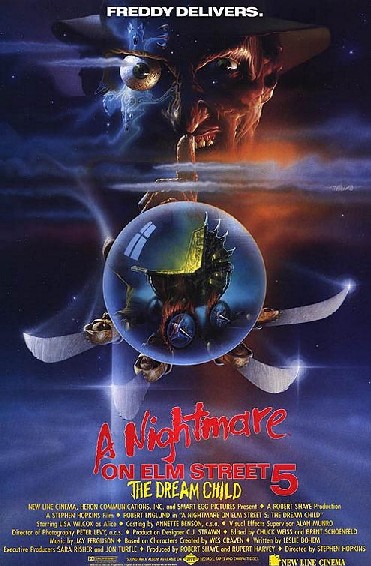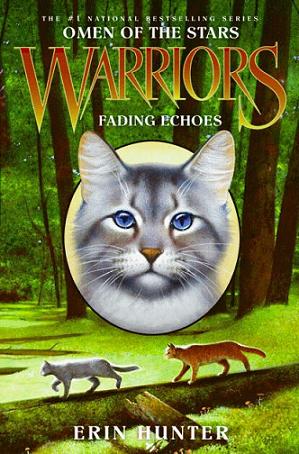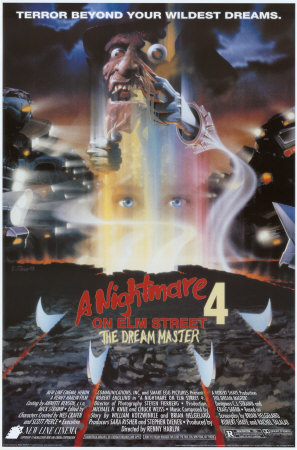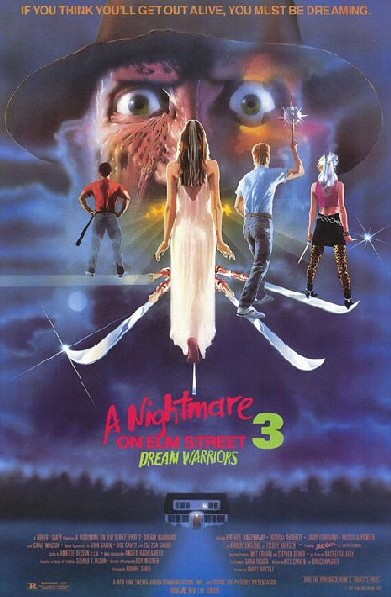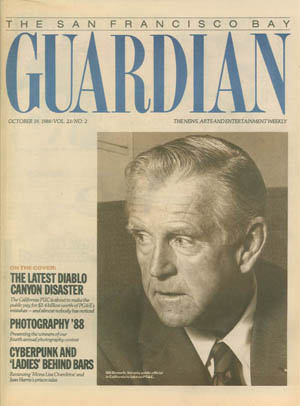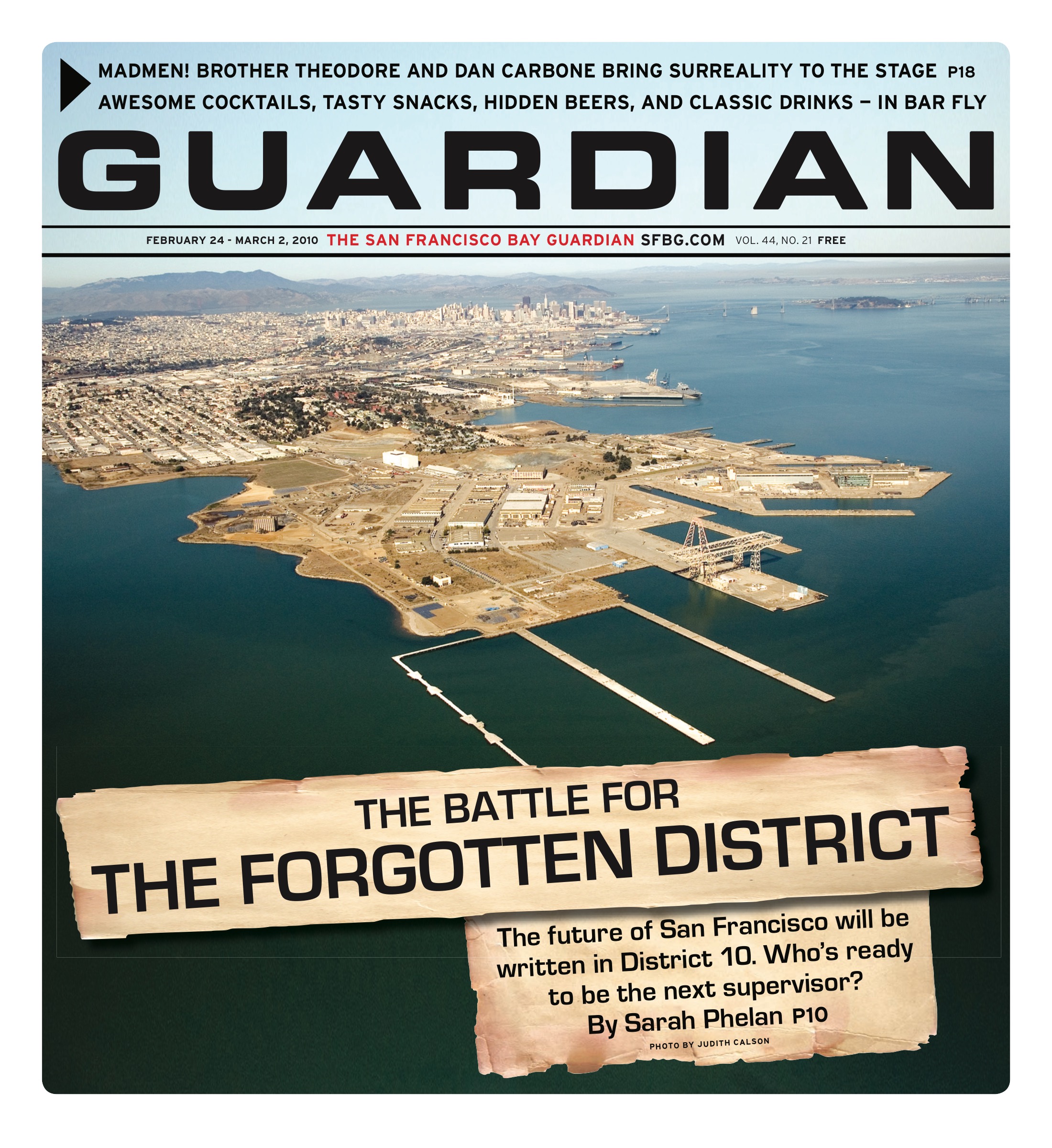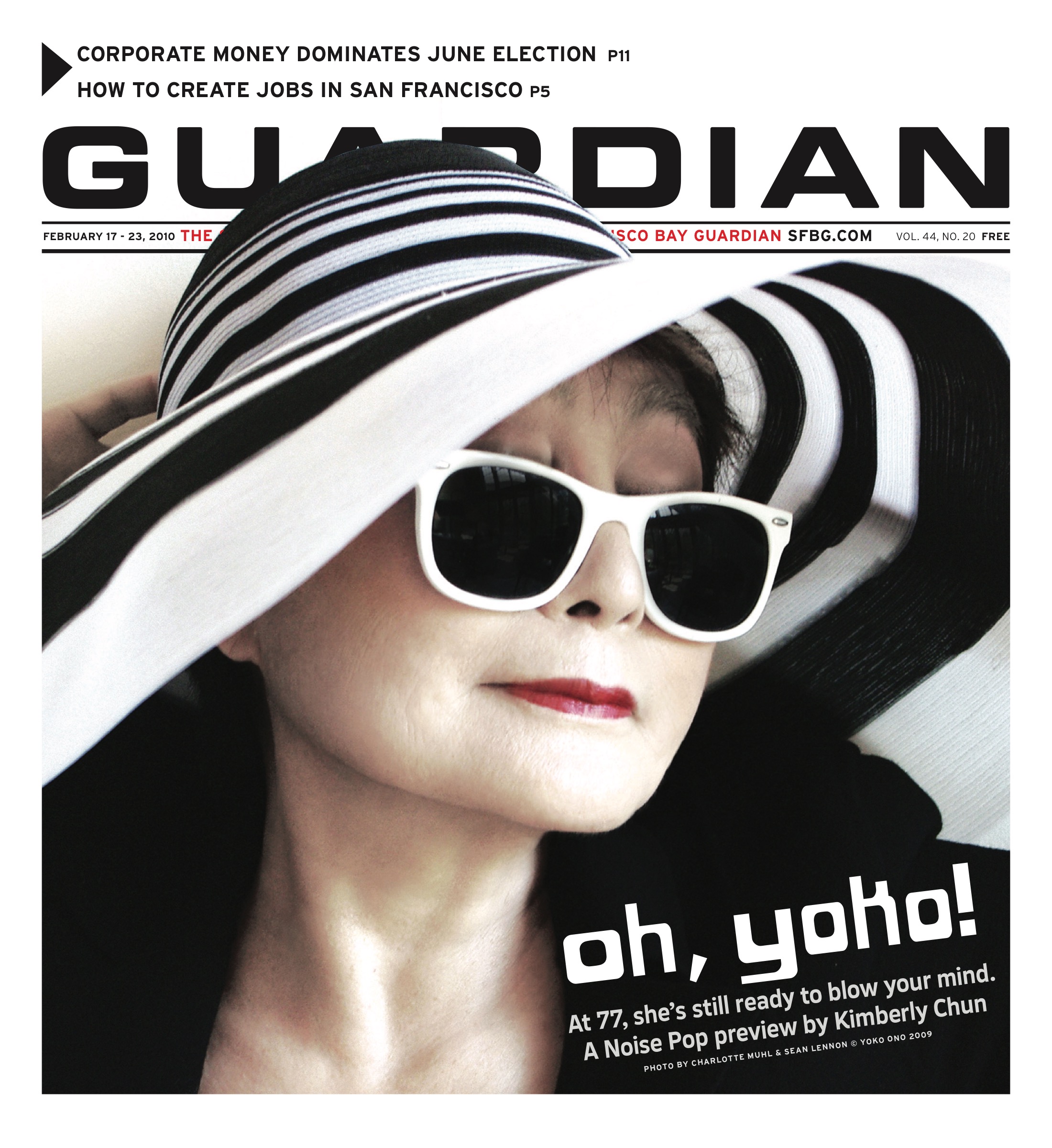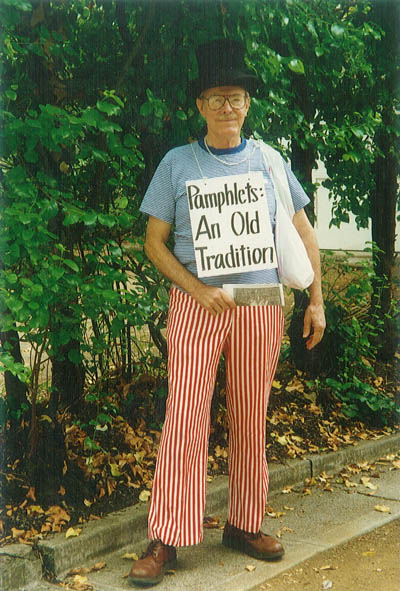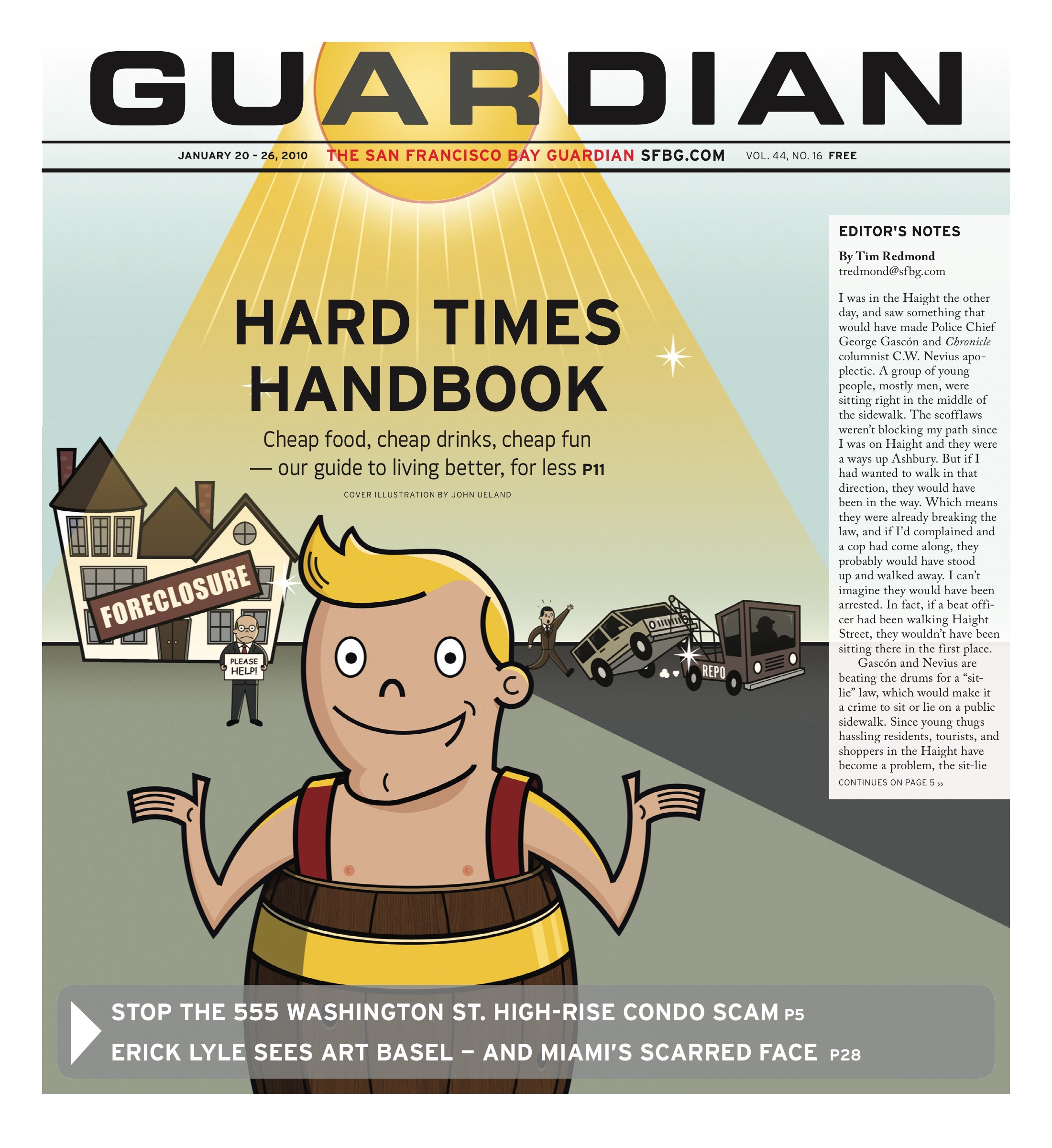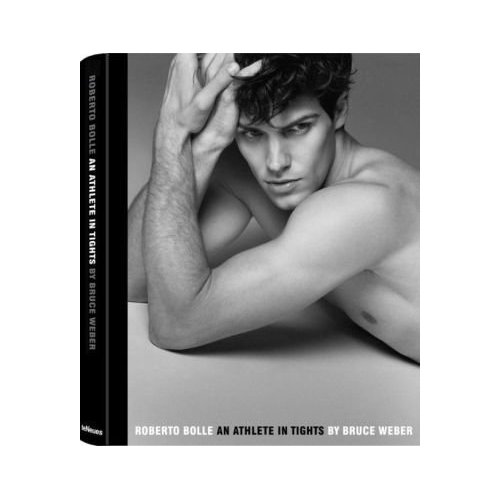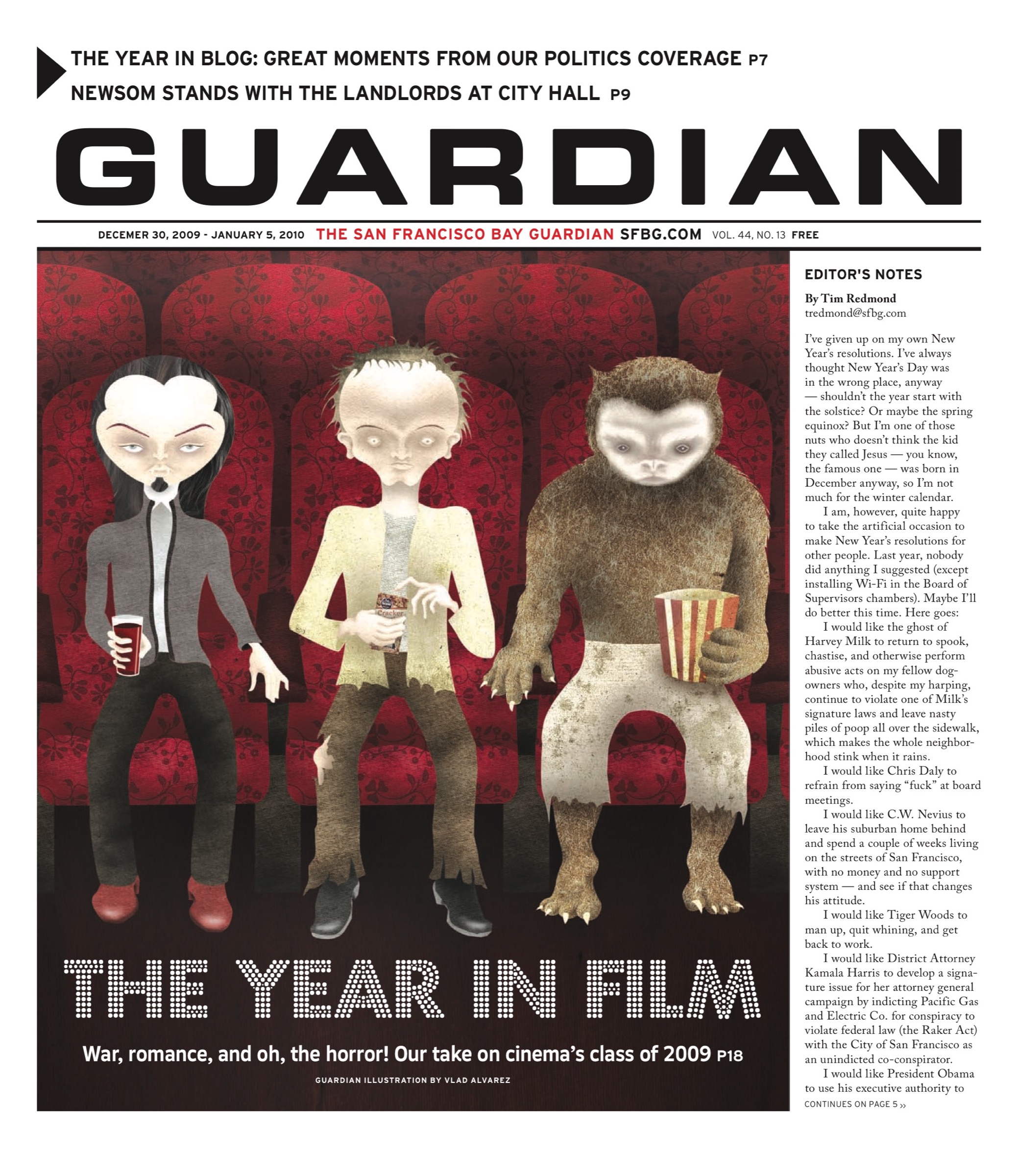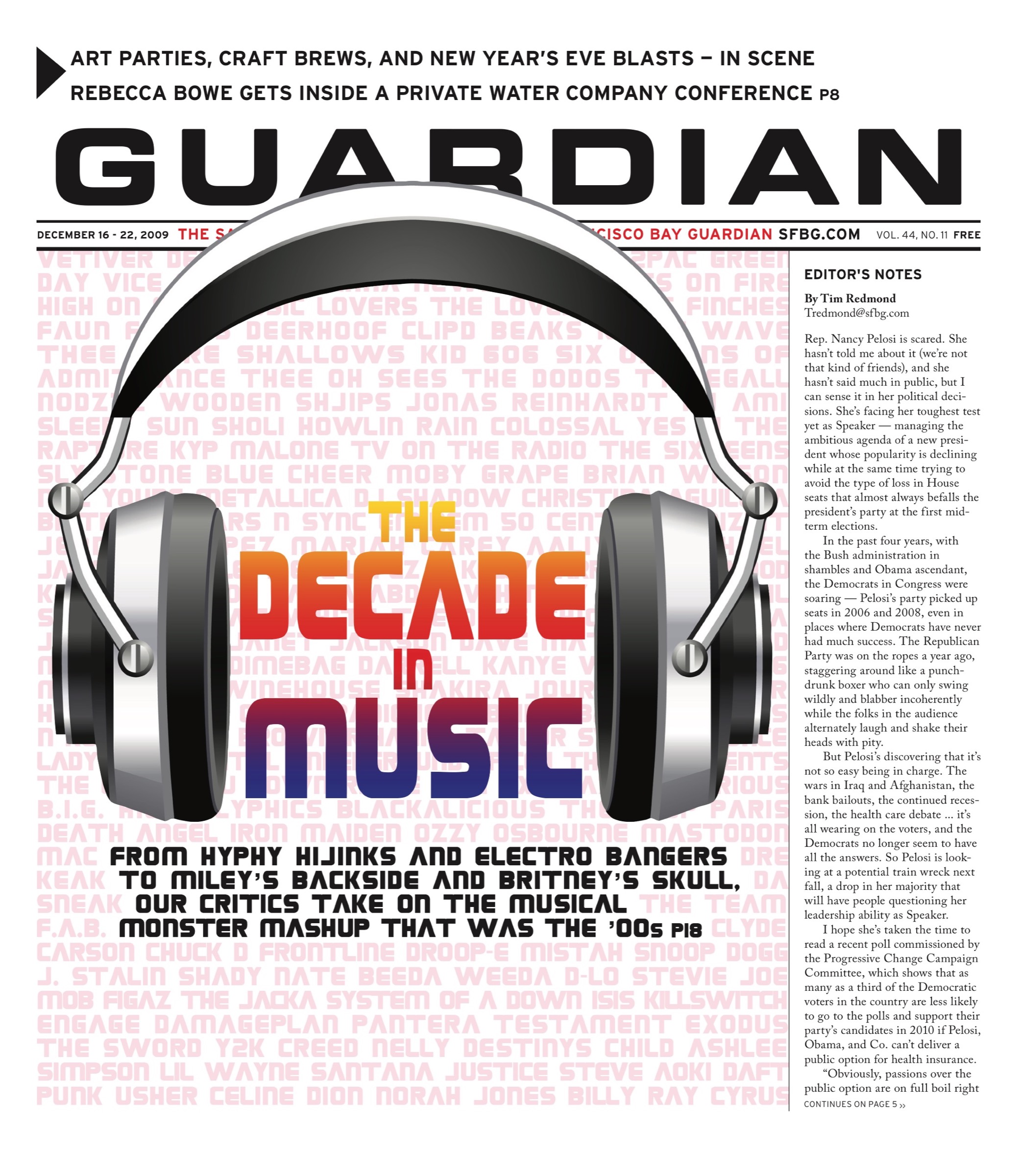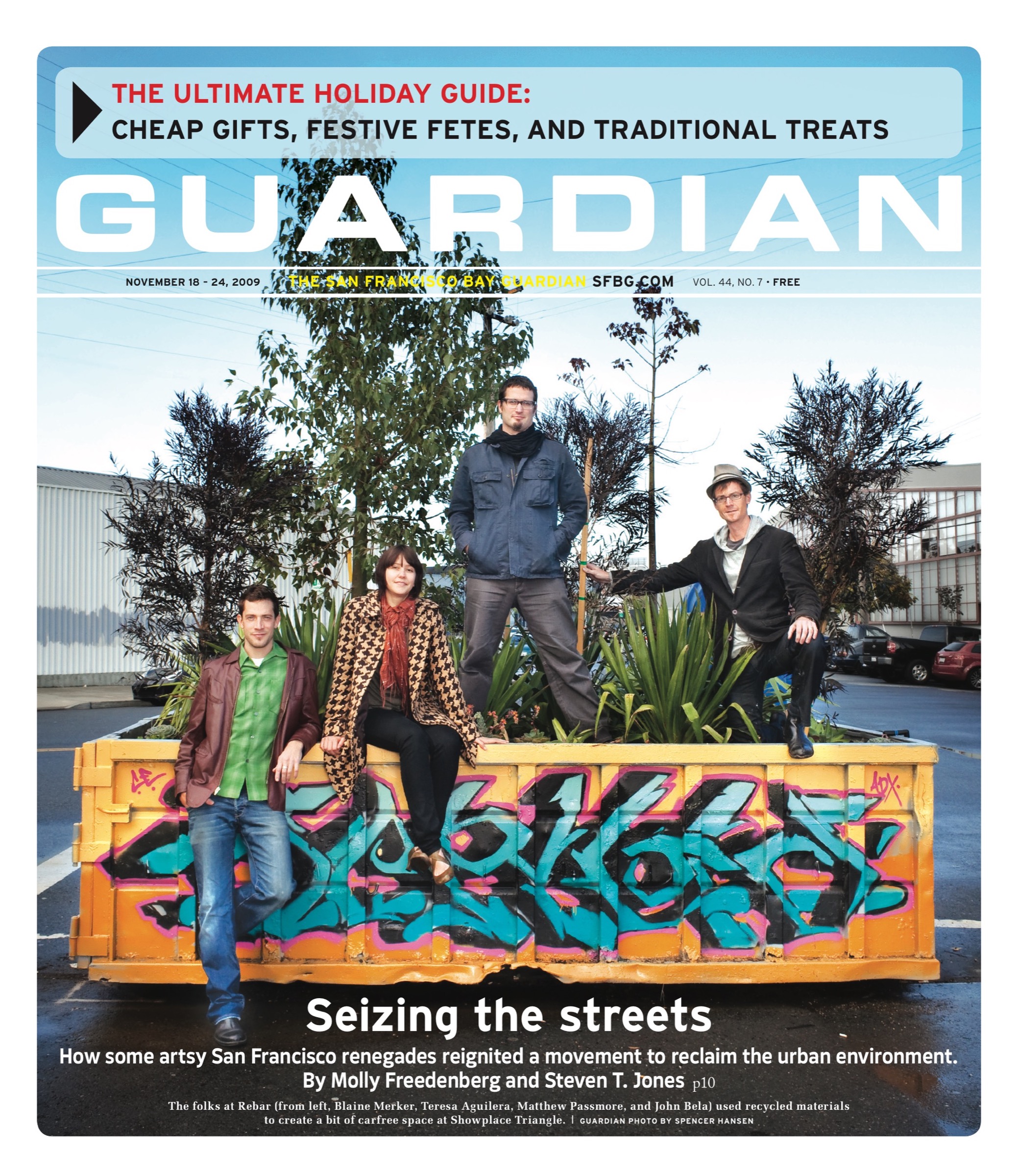Music listings are compiled by Paula Connelly and Cheryl Eddy. Since club life is unpredictable, it’s a good idea to call ahead to confirm bookings and hours. Prices are listed when provided to us. Submit items at listings@sfbg.com.
WEDNESDAY 7
ROCK/BLUES/HIP-HOP
Bad Girls Go to Hell, Street Score, Battery Powered Grandpa, High School Parties Rickshaw Stop. 8pm, $5.
Tia Carroll and the Hardwork Biscuits and Blues. 8pm, $15.
Highhorse, Famous, Eric Shea and the High Deserters El Rio. 8pm, $5.
Little Junior Davis and the Knucklehead Blues Hounds Rasselas Jazz. 8pm, free.
Lotus, Break Science Independent. 9pm, $1-20.
Kermit Lynch and His Band Great American Music Hall. 7pm, $125.
Mimicking Birds, Kathryn Anne Davis Hotel Utah. 9pm, $7.
Mudbug Coda. 9pm, $7.
Mumlers, Emily Jane White, Osage Orange Hemlock Tavern. 9pm, $7.
No Use for a Name, Perfect Machines, Rockfight Thee Parkside. 8pm, $10.
People Under the Stairs, Kenan Bell Slim’s. 9pm, $16.
Starfucker, Deelay Ceelay, Strength Bottom of the Hill. 9pm, $10.
Andrew W.K. and Calder Quartet Café du Nord. 8pm, $25.
Witness the Horror, Hukaholix, Murderess Annie’s Social Club. 8pm, $6.
JAZZ/NEW MUSIC
Cat’s Corner Savanna Jazz. 7pm, $5-10.
Katona Twins Hotel Rex, 562 Sutter, SF; (415) 398-6449, www.performances.org. 6:30pm, $20.
Ben Marcato and the Mondo Combo Top of the Mark. 7:30pm, $10.
Realistic Orchestra Yoshi’s San Francisco. 10:30pm, $14.
Carlos Reyes Yoshi’s San Francisco. 8pm, $20.
Tin Cup Serenade Le Colonial, 20 Cosmo Place, SF; (415) 931-3600. 7pm, free.
FOLK/WORLD/COUNTRY
Bluegrass Country Jam Plough and Stars. 9pm, free. With Jeanie and Chuck.
Gaucho, Michael Abraham Jazz Session Amnesia. 8pm, free.
New Directions in Indian Classical Music Climate Theater, 285 Ninth St., SF; (415) 704-3260. 8pm, $7-15.
DANCE CLUBS
Afreaka! Attic, 3336 24th St; souljazz45@gmail.com. 10pm, free. Psychedelic beats from Brazil, Turkey, India, Africa, and across the globe with MAKossa.
Bizarre Love Triangle Elbo Room. 9pm, $5. Eighties dance party with DJs Anso and Choice.
Booty Call Q-Bar, 456 Castro; www.bootycallwednesdays.com. 9pm. Juanita Moore hosts this dance party, featuring DJ Robot Hustle.
Dubstep vs. Disco Poleng Lounge. 10pm, $5. Featuring In Flagranti.
Hands Down! Bar on Church. 9pm, free. With DJs Claksaarb, Mykill, and guests spinning indie, electro, house, and bangers.
Hump Night Elbo Room. 9pm, $5. The week’s half over – bump it out at Hump Night!
Jam Wednesday Infusion Lounge. 10pm, free. DJ Slick Dee.
Qoöl 111 Minna Gallery. 5-10pm, $5. Pan-techno lounge with DJs Spesh, Gil, Hyper D, and Jondi.
RedWine Social Dalva. 9pm-2am, free. DJ TophOne and guests spin outernational funk and get drunk.
Respect Wednesdays End Up. 10pm, $5. Rotating DJs Daddy Rolo, Young Fyah, Irie Dole, I-Vier, Sake One, Serg, and more spinning reggae, dancehall, roots, lovers rock, and mash ups.
Synchronize Il Pirata, 2007 16th St.; (415) 626-2626. 10pm, free. Psychedelic dance music with DJs Helios, Gatto Matto, Psy Lotus, Intergalactoid, and guests.
THURSDAY 8
ROCK/BLUES/HIP-HOP
Atomic Bomb Audition, Diminished Men, Blanketship Hemlock Tavern. 9pm, $6.
Bite, Black Dream, Capp Street Girls, MC Meat Hook and the Vital Organs Annie’s Social Club. 8pm, $6.
Tim Bluhm, Neal Casal, and Fred Torphy Make-Out Room. 7pm, $12.
Boombox, Ana Sia Independent. 9pm, $15.
Brass Liberation Orchestra, Charming Hostess, Loco Bloco El Rio. 7pm, $5-20.
Death Valley High, Thrill of it All, King Loses Crown Café du Nord. 9:30pm, $10.
Foreigner Fillmore. 8pm, $45.
Great American Taxi, Kate Gaffney Connecticut Yankee, 100 Connecticut, SF; (415) 552-4440. 9pm, $12.
Carey Head, Kirk Hamilton, Alex Kelly Hotel Utah. 9pm, $7.
Jelly Bread Boom Boom Room. 9:30pm, $5.
"Manofest 2009" Thee Parkside. 9pm, $7. With Hellowar (Hellhunter), Barry Manowar (Fleshies), Womanowar (Dalton), Warriors of the World, and DJ Rob Metal.
Coco Montoya Biscuits and Blues. 8pm, $18.
Sugar and Gold, Battlehooch, Vows Eagle Tavern. 9pm, $5.
Teenage Jesus and the Jerks, Burmese, TITS Slim’s. 8pm, $25.
TLXN, Birdmonster, Erin Brazill Bottom of the Hill. 9:30pm, $8.
BAY AREA
Loggins and Messina Paramount Theatre. 8pm, $39.50-79.50.
JAZZ/NEW MUSIC
Eric Kurtzrock Trio Ana Mandara, Ghirardelli Square, 891 Beach, SF; (415) 771-6800. 7:30pm, free.
Laurent Fourgo Le Colonial, 20 Cosmo Place, SF; (415) 931-3600. 7:30pm, free.
John Kalleen Group Shanghai 1930. 7pm, free.
Marlina Teich Trio Brickhouse, 426 Brannan, SF; (415) 820-1595. 7-10pm, free.
"SF Jazz Presents Hotplate: Wil Blades plays Jimmy Smith" Amnesia. 8pm, $5.
Stanley Clarke Trio with Hiromi and Lenny White Yoshi’s San Francisco. 8 and 10pm, $32.
Stompy Jones Top of the Mark. 7:30pm, $10.
FOLK/WORLD/COUNTRY
Will Blades Amnesia. 9pm, $5. Tribute to Jimmy Smith.
Manicato Coda. 9pm, $7.
Parno Graszt, Brass Menazeri Rickshaw Stop. 7:30pm, $10.
Shannon Céilí Band Plough and Stars. 9pm, free.
Eric and Suzy Thompson Atlas Café. 8pm, free.
Toubab Krewe Great American Music Hall. 9pm, $18.
DANCE CLUBS
Afrolicious Elbo Room. 9:30pm, $5-6. DJs Pleasuremaker, Señor Oz, J Elrod, and B Lee spin Afrobeat, Tropicália, electro, samba, and funk.
CakeMIX SF Wish, 1539 Folsom, SF. 10pm, free. DJ Carey Kopp spinning funk, soul, and hip hop.
Caribbean Connection Little Baobab, 3388 19th St; 643-3558. 10pm, $3. DJ Stevie B and guests spin reggae, soca, zouk, reggaetón, and more.
Drop the Pressure Underground SF. 6-10pm, free. Electro, house, and datafunk highlight this weekly happy hour.
Funky Rewind Skylark. 9pm, free. DJ Kung Fu Chris, MAKossa, and rotating guest DJs spin heavy funk breaks, early hip-hop, boogie, and classic Jamaican riddims.
Gymnasium Matador, 10 6th St., SF; (415) 863-4629. 9pm, free. With DJ Violent Vickie and guests spinning electro, hip hop, and disco.
Heat Icon Ultra Lounge. 10pm, free. Hip-hop, R&B, reggae, and soul.
Kick It Bar on Church. 9pm. Hip-hop with DJ Jorge Terez.
Kissing Booth Make Out Room. 9pm, free. DJs Jory, Commodore 69, and more spinning indie dance, disco, 80’s, and electro.
Koko Puffs Koko Cocktails, 1060 Geary; 885-4788. 10pm, free. Dubby roots reggae and Jamaican funk from rotating DJs.
Mestiza Bollywood Café, 3376 19th St., SF; (415) 970-0362. 10pm, free. Showcasing progressive Latin and global beats with DJ Juan Data.
Motion Sickness Vertigo, 1160 Polk; (415) 674-1278. 10pm, free. Genre-bending dance party with DJs Sneaky P, Public Frenemy, and D_Ro Cyclist.
Popscene 330 Rich. 10pm, $10. Rotating DJs spinning indie, Britpop, electro, new wave, and post-punk.
Represent Icon Lounge. 10pm, $5. With Resident DJ Ren the Vinyl Archaeologist and guest.
Toppa Top Thursdays Club Six. 9pm, $5. Jah Warrior, Jah Yzer, I-Vier, and Irie Dole spin the reggae jams for your maximum irie-ness.
Trinity Dance DNA Lounge. 7:30pm, $16. Tribute to Leonard Cohen, Tom Waits, and Nick Cave with 5 Cent Coffee, Fromagique, and DJs James Bradley, Persephone, Mz Samantha, and Kit.
FRIDAY 9
ROCK/BLUES/HIP-HOP
*Children of Bodom, Black Dahlia Murder, Austrian Death Machine, Skeletonwitch Regency Ballroom. 7pm, $30.
D’Fibrillatorz Mocha 101, 1722 Taraval, SF; (415) 702-9869. 8pm, free.
Damon and Naomi Amoeba, 1855 Haight, SF; (415) 831-1200. 6pm, free.
*Floating Goat, Dirty Power, Serpents Crown Annie’s Social Club. 5pm, $5.
A Hawk and a Handsaw, Damon and Naomi Independent. 9pm, $14.
Honey Island Swamp Band Boom Boom Room. 10pm.
Danny James and Pear, These Hills of Gold, Parlour Suite Knockout. 9pm, $7.
Jane Doe’s Union Room (at Biscuits and Blues). 9:30pm, $10.
Monsters Are Not Myths, Wave Array, Sentinel Hotel Utah. 9pm, $12.
Mutemath Fillmore. 9pm, $25.
Kim Nalley Biscuits and Blues. 8 and 10pm, $22.
OvO, Subarachnoid Space, Worm Orouboros Hemlock Tavern. 9pm, $10.
*"Part Time Punks Mini-Fest" Mezzanine. 8pm, $20. With Raincoats, Section 25, Gang of Four, For Against, and more.
Phil and Jackets, Forget About Boston, Jacob Wolkenhauer, Essence, DJ Roy Two Thousand Café du Nord. 9:30pm, $10.
Polvo, Moggs Slim’s. 9pm, $15.
Rosewood Thieves, Dead Trees, Mist and Mast Bottom of the Hill. 10pm, $10.
Stung, Petty Theft Red Devil Lounge. 8pm, $12.
BAY AREA
Belly of the Whale, Pentacles, Groundskeeper, Talky Tina Uptown. 9pm, free.
Jason Mraz, Brett Dennen, Robert Francis, Bushwalla Greek Theater, UC Berkeley, Berk; www.ticketmaster.com. 7pm, $47.50.
JAZZ/NEW MUSIC
Audium 9 1616 Bush, SF; (415) 771-1616. 8:30pm, $15.
Black Market Jazz Orchestra Top of the Mark. 9pm, $10.
"Cultural Encounters: Friday Nights at the deYoung presents Jazz at Intersection" Wilsey Court, de Young Museum, 50 Hagiwara Tea Garden Dr, SF; www.deyoungmuseum.org. 6:30pm, free. With Nice Guy Trio’s Root Exchange Finale: Season Two.
8 Legged Monster Coda. 10pm, $10.
Eric Kurtzrock Trio Ana Mandara, Ghirardelli Square, 891 Beach, SF; (415) 771-6800. 8pm, free.
Josh Jones Latin Jazz Ensemble Vin Club, 515 Broadway, SF; (415) 277-7228. 7pm, free.
"Lester Bowie Tribute Concert" Herbst Theatre, 401 Van Ness; (415) 392-4400, www.cityboxoffice.com. 7:30pm, $30-50. With James Carter, Corey Wilkes, Fred Ho, Roscoe Mitchell, and Famoudou Don Moye.
Lucid Lovers Rex Hotel, 562 Sutter, SF; (415) 433-4434. 6-8pm.
Michael Zilber Jazz Quartet Red Poppy Art House. 8pm, $12-20.
Stanley Clarke Trio with Hiromi and Lenny White Yoshi’s San Francisco. 8 and 10pm, $32.
Terry Disley Experience Shanghai 1930. 7:30pm, free.
Words Partisan Gallery, 112 Guerrero, SF; www.partisangallery.com. 9pm, free.
FOLK/WORLD/COUNTRY
Mild Colonial Boys Plough and Stars. 9pm, $7. With Fergus Feeley.
Wisin Y Yandel Bill Graham Civic Auditorium, 99 Grove, SF; www.goldenvoice.com. 8pm, $56-76.
DANCE CLUBS
Activate! Lookout, 3600 16th St; (415) 431-0306. 9pm, $3. Face your demigods and demons at this Red Bull-fueled party.
Bar on Church 9pm. Rotating DJs Zax, Zhaldee, and Nuxx.
Exhale, Fridays Project One Gallery, 251 Rhode Island; (415) 465-2129. 5pm, $5. Happy hour with art, fine food, and music with Vin Sol, King Most, DJ Centipede, and Shane King.
Fat Stack Fridays Koko Cocktails, 1060 Geary, SF; (415) 885-4788. 10pm, free. With rotating DJs Romanowski, B-Love, Tomas, Toph One, and Vinnie Esparza.
Fo’ Sho! Fridays Madrone. 10pm, $5. DJs Kung Fu Chris, Makossa, and Quickie Mart spin rare grooves, soul, funk, and hip-hop classics.
Gay Asian Paradise Club Eight, 1151 Folsom, SF; www.eightsf.com. 9pm, $8. Featuring two dance floors playing dance and hip hop, smoking patio, and 2 for 1 drinks before 10pm.
Grime City Club Six. 9pm, $7. With DJs Joe Nice, Bogl, Grime City Crew, Emcee Chilo, and more spinning dubstep.
Gymnasium Stud. 10pm, $5. With DJs Violent Vickie and guests spinning electro, disco, rap, and 90s dance and featuring performers, gymnastics, jump rope, drink specials, and more.
I Can’t Feel My Face Amnesia. 10pm, $3. With DJs EUG and J Montag spinning punk, funk, electro, rock, disco, hip hop, and no wave.
Look Out Weekend Bambuddha Lounge. 4pm, free. Drink specials, food menu and resident DJs White Girl Lust, Swayzee, Philie Ocean, and more.
Lovebuzz Annie’s Social Club. 9pm, $5. Classic punk, 90s, and rock with Jason aka Jawa, Jetset James, and Melody Nelson.
Lucky Road DNA Lounge. 9pm, $10. Gypsy punk dance party with Hot Pink Feathers, Barbary Coast Shakedown, Tara Quinn, Sister Kete, MssRockwell DeVill, DJ Alxndr, and Gypsy Bazaar.
M4M Fridays Underground SF. 10pm-2am. Joshua J and Frankie Sharp host this man-tastic party.
Punk Rock and Shlock Karaoke Annie’s Social Club. 9pm-2am, $5. Eileen and Jody bring you songs from multiple genres to butcher: punk, new wave, alternative, classic rock, and more.
Shit Robot Paradise Lounge. 9pm, $10. With DJs Tal M. Klein and Chardmo spinning disco and funk.
6 to 9 800 Larkin, 800 Larkin, SF; (415) 567-9326. 6pm, free. DJs David Justin and Dean Manning spinning downtempo, electro breaks, techno, and tech house. Free food by 800 Larkin. Treat Em Right Elbo Room. 10pm, $5. Hip-hop, funk, reggae, and Latin with DJs Vinnie Esparza and B-Cause.
SATURDAY 10
ROCK/BLUES/HIP-HOP
Cory Brown, Melissa Phillips Red Devil Lounge. 9pm, $8.
Curtis Bumpy Coda. 10pm, $10.
Chapter 2, Panda Conspiracy Boom Boom Room. 10pm, $12.
Disastroid, Big Blue Whale, Solid Hemlock Tavern. 10pm, $7.
Fast Times Pier 39, SF; www.pier39.com. 7:30pm, free.
"Frisco Freakout!" Thee Parkside. 2pm, $15. With Heavy Hills, Lumerians, Powell St. John and the Aliens, Assemble Head in Sunburst Sound, Liquorball with Steve MacKay, Wooden Shjips, Citay, and more.
Ernie Johnson Velma’s, 2246 Jerrold, SF; (415) 824-7646. 8pm.
Kyle Hollingsworth Band, Zach Gill Independent. 9pm, $17.
Metronomy, Fool’s Gold, Leopold and His Fiction Bottom of the Hill. 10pm, $12.
Pi Bruno’s. 8:30pm, $5-10.
La Plebe, Get Dead, Compton SF, Keeners Annie’s Social Club. 9:30pm, $8.
"Rocket Dog Rescue Benefit" El Rio. 3pm. With Lady Fingaz, Solid, Jay Trainer Band, and Scranton.
Satyricon, Bleeding Through, Toxic Holocaust, Chthonic Slim’s. 8pm, $20.
Stone Foxes, Bhi Bhiman, Dubious Ranger Hotel Utah. 8:30pm, $10.
Tommy Castro Band and the Legendary Rhythm and Blues Revue Great American Music Hall. 8pm, $17.
Tower of Power Fillmore. 8pm, $40.
"Tricycle Music Fest West" San Francisco Main Library, 100 Larkin, SF; http://tricyclefest.org. 10am-2pm, free. With Hipwaders, Charity and the JamBand, and Frances England and the Time-Outs.
Mitch Woods Biscuits and Blues. 8 and 10pm, $20.
BAY AREA
Bob Dylan and His Band Greek Theater, UC Berkeley, Berk; www.ticketmaster.com. 7:30pm, $50.
Har Mar Superstar, Heavenly States, Hot Tub, Somehow at Sea Uptown. 9pm, $15.
JAZZ/NEW MUSIC
Audium 9 1616 Bush, SF; (415) 771-1616. 8:30pm, $15.
Eric Kurtzrock Trio Ana Mandara, Ghirardelli Square, 891 Beach, SF; (415) 771-6800. 8pm, free.
Jack Pollard Shanghai 1930. 7:30pm, free.
Ricardo Scales Top of the Mark. 9pm, $10.
Stanley Clarke Trio with Hiromi and Lenny White Yoshi’s San Francisco. 8 and 10pm, $32.
Paula West with George Mesterhazy Quartet Herbst Theatre, 401 Van Ness, SF; www.performances.org. 8pm, $27-39.
FOLK/WORLD/COUNTRY
Culann’s Hounds Plough and Stars. 9pm, $7.
"Fela Kuti Birthday Celebration" Café du Nord. 9:30pm, $12. With DJ Jeremiah and the Afrobeat Nation, and DJ Said.
Krosswindz Knockout. 9pm, $6.
Maus Haus, Church Amnesia. 9pm, $7.
Mission Bohemia Red Poppy Art House. 8pm, $12.
Stellamara Noe Valley Ministry, 1021 Sanchez, SF; (415) 454-5238. 8:15pm, $17.
DANCE CLUBS
Bar on Church 9pm. Rotating DJs Foxxee, Joseph Lee, Zhaldee, Mark Andrus, and Niuxx.
Bootie DNA Lounge. 9pm, $6-12. Mash-ups with DJs Reno, ComaR, Phatbastard, and residents Adrian and Mysterious D, and Dada.
HYP Club Eight, 1151 Folsom, SF; www.eightsf.com. 10pm, free. Gay and lesbian hip hop party, featuring DJs spinning the newest in the top 40s hip hop and hyphy.
Krazy for Karaoke Happy Hour Knockout. 5-9pm, free. Belt it out with your host Deadbeat.
Rebel Radio Club Six. 9pm, $10. With DJs Green B and Funky C spinning reggae and hip hop and a live performance by Hypnotic Vibrations.
Reggae Gold SF Endup. 10pm, $5. With DJs Daddy Rolo, Polo Mo’Quuz, and more spinning reggae, dancehall, and remixes all night.
Same Sex Salsa and Swing Magnet, 4122 18th St., SF; (415) 305-8242. 7pm, free.
Spirit Fingers Sessions 330 Ritch. 9pm, free. With DJ Morse Code and live guest performances.
Summer Saturdays Bar On Church. 9pm, free. With DJ Mark Andrus spinning top 40, mashups, hip hop, and electro.
Tormenta Tropical Elbo Room. 10pm, $5-10. Electro-cumbia with Sabo, Disco Shawn, and Oro 11.
SUNDAY 11
ROCK/BLUES/HIP-HOP
Academy Is, Mayday Parade, Set Your Goals, You Me At Six Regency Ballroom. 7pm, $18.
And You Will Know Us By the Trail of Dead, Future of the Left Hotel Utah. 8pm, $20.
"Battle of the Bands" DNA Lounge. 5:30pm, $12. With Raya Nova, Inner Sunset, Accept Your Fate, Dopesick Tight, and more.
Hanalei, Daikon, Themes, Polar Bears Thee Parkside. 8pm, $7.
Honey Island Swamp Band, Whisky Pills Pier 23. 4pm.
In ‘n Out Boom Boom Room. 10pm, $12.
Mensclub, Short Dogs Grow, Street Lyons, John Thaxton Bottom of the Hill. 1pm, $10.
Nadja, Date Palms, Portraits Hemlock Tavern. 9pm, $6.
Thursday, Fall of Troy, Dear Hunter, Touche Amore Slim’s. 7:30pm, $20.
Gregg Wright Biscuits and Blues. 8pm, $15.
BAY AREA
Bob Dylan and His Band Greek Theater, UC Berkeley, Berk; www.ticketmaster.com. 7:30pm, $50.
JAZZ/NEW MUSIC
Rob Modica and friends Simple Pleasures, 3434 Balboa, SF; (415) 387-4022. 3pm, free.
Stanley Clarke Trio with Hiromi and Lenny White Yoshi’s San Francisco. 2 and 7pm, $5-32.
FOLK/WORLD/COUNTRY
Meredith Edgar Amnesia. 7pm, free.
Jack Gilder, Kevin Bemhagen, Richard Mandel and friends Plough and Stars. 9pm, free.
Paulo Presotto and the Ziriguidum Project Coda. 9pm, $7.
Lavay Smith and Her Red Hot Skillet Lickers, Lady A and Her Heeldraggers Amnesia. 9pm, $7-10.
DANCE CLUBS
DiscoFunk Mashups Cat Club. 10pm, free. House and 70’s music.
Dub Mission Elbo Room. 9pm, $6. Dub, roots, and classic dancehall with Kush Arora, MC Zulu, Spit Brothers, and DJ Sep.
5 O’Clock Jive Inside Live Art Gallery, 151 Potrero, SF; (415) 305-8242. 5pm, $5. A weekly swing dance party.
Gloss Sundays Trigger, 2344 Market, SF; (415) 551-CLUB. 7pm. With DJ Hawthorne spinning house, funk, soul, retro, and disco.
Honey Soundsystem Paradise Lounge. 8pm-2am. "Dance floor for dancers – sound system for lovers." Got that?
Jock! Lookout, 3600 16th; 431-0306. 3pm, $2. This high-energy party raises money for LGBT sports teams.
Kick It Bar on Church. 9pm. Hip-hop with DJ Zax.
Religion Bar on Church. 3pm. With DJ Nikita.
Stag AsiaSF. 6pm, $5. Gay bachelor parties are the target demo of this weekly erotic tea dance.
MONDAY 12
ROCK/BLUES/HIP-HOP
BluesMix Biscuits and Blues. 8pm, $15.
Elliott Brood, Rosi Golan, Wooden Sky Café du Nord. 8pm, $10.
Burmese, Javelina, Waylon Genocide Elbo Room. 9pm, $5.
Shawn Colvin Yoshi’s San Francisco. 8pm, $30.
Sean Kingston, Flo Rida, New Boyz, Jaiko Warfield. 8pm, $35-40.
Sean McArdle, James Finch Jr., Caught in Motion Club Waziema, 543 Divisadero, SF; (415) 999-4061. 8pm, free.
Mono, Maserati Great American Music Hall. 8pm, $15.
Nomeansno, Triclops! Independent. 8pm, $15.
JAZZ/NEW MUSIC
Lavay Smith Trio Enrico’s, 504 Broadway, SF; www.enricossf.com. 7pm, free.
FOLK/WORLD/COUNTRY
Toshio Hirano Amnesia. 8:30pm, free.
DANCE CLUBS
Black Gold Koko Cocktails, 1060 Geary; 885-4788. 10pm-2am, free. Senator Soul spins Detroit soul, Motown, New Orleans R&B, and more — all on 45!
Death Guild DNA Lounge. 9:30pm, $3-5. Goth, industrial, and synthpop with Decay, Joe Radio, Melting Girl, Miz Margo, and Lexor.
Going Steady Dalva. 10pm, free. DJs Amy and Troy spinning 60’s girl groups, soul, garage, and more.
King of Beats Tunnel Top. 10pm. DJs J-Roca and Kool Karlo spinning reggae, electro, boogie, funk, 90’s hip hop, and more.
Manic Mondays Bar on Church. 9pm. Drink 80-cent cosmos with Djs Mark Andrus and Dangerous Dan.
Monster Show Underground SF. 10pm, $5. Cookie Dough and DJ MC2 make Mondays worth dancing about, with a killer drag show at 11pm.
Network Mondays Azul Lounge, One Tillman Pl; www.inhousetalent.com. 9pm, $5. Hip-hop, R&B, and spoken word open mic, plus featured performers.
Spliff Sessions Tunnel Top. 10pm, free. DJs MAKossa, Kung Fu Chris, and C. Moore spin funk, soul, reggae, hip-hop, and psychedelia on vinyl.
TUESDAY 13
ROCK/BLUES/HIP-HOP
Bell X1 Independent. 8pm, $15.
Shawn Colvin Yoshi’s San Francisco. 8pm, $30.
Frankenstein L.I.V.S., Ashtray, Just Head Knockout. 10pm, free.
Craig Horton Biscuits and Blues. 8pm, $15.
Junior Boys, Circlesquare Mezzanine. 9pm, $18.
Kid Congo Powers and the Pink Monkeybirds, Bridez, Baths Hemlock Tavern. 9pm, $10.
Juliette Lewis, Ettes, American Bang Slim’s. 8pm, $16.
Pogues, Devotchka, Sean Wheeler and Zander Schloss Warfield. 8pm, $47.50-69.50.
Subdudes, Jimmy Sweetwater and Craig Ventresco Great American Music Hall. 7:30pm, $21.
Sunny Day Real Estate Fillmore. 8pm, $27.50.
A Wilhelm Scream, Living With Lions, Riot Before, Heartsounds Thee Parkside. 8pm, $10.
Yellow Dress, Lime Colony, Passenger and Pilot, JJ Schultz Band Bottom of the Hill. 9pm, $8.
Yogoman Burning Band, Makru, Slow Trucks Café du Nord. 9:30pm, $10.
JAZZ/NEW MUSIC
Dave Parker Quintet Rasselas Jazz. 8pm.
"Jazz Mafia Tuesdays" Coda. 9pm, $7. With Spaceheater’s Blast Furnace.
Ricardo Scales Top of the Mark. 6:30pm, $5.
FOLK/WORLD/COUNTRY
Barry O’Connell, Vinnie Cronin and friends Plough and Stars. 9pm, free.
DANCE CLUBS
Alcoholocaust Presents Argus Lounge. 9pm. With DJs What’s His Fuck, Lightnin’ Jeff G., and Damage Case.
Drunken Monkey Annie’s Social Club. 9pm, free. Random tunes and chaos with DJ Reptile.
Eclectic Company Skylark, 9pm, free. DJs Tones and Jaybee spin old school hip hop, bass, dub, glitch, and electro.
La Escuelita Pisco Lounge, 1817 Market, SF; (415) 874-9951. 7pm, free. DJ Juan Data spinning gay-friendly, Latino sing-alongs but no salsa or reggaeton.
Latin Biatz Elbo Room. 9pm, $5. Funk, hip-hop, and Latin with Funky C, Joya, and DJ C-Funk.
Rock Out Karaoke! Amnesia. 7:30pm. With Glenny Kravitz.
Share the Love Trigger, 2344 Market, SF; (415) 551-CLUB. 5pm, free. With DJ Pam Hubbuck spinning house.
Womanizer Bar on Church. 9pm. With DJ Nuxx.

